A Lake’s Fish Stocks Fall, and Montenegro Blames Albania
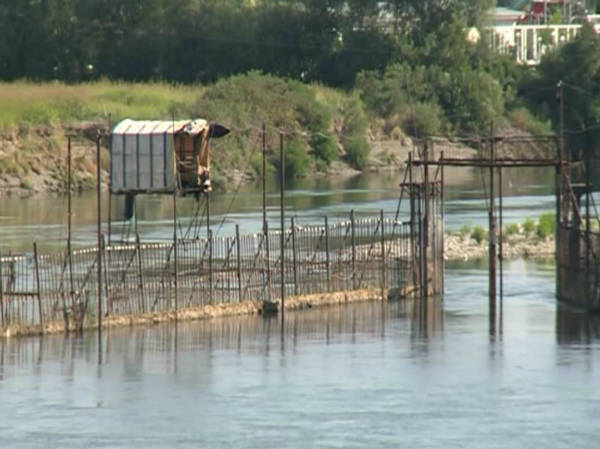
BANNED IN MONTENEGRO BUT BELOVED IN ALBANIA, TRADITIONAL "DALJANI”, OR FISH WEIRS, ARE BEING BLAMED FOR A DRAMATIC FALL IN FISH STOCKS IN LAKE SKADAR.
Dzelal Hodzic fondly remembers the biggest catch of his life.
“You could feel it by the noise,” said the veteran Montenegrin fisherman. “It was night, and they just said ‘lift!’ It took us from morning until the following night to get it out. We didn’t know what to do with that much fish.”
It was October 1971, and Hodzic – now head of the environmental group Green Step – and his colleagues had just landed 23 tonnes of fish in a single net, trapping them with a weir as the fish headed back to the Adriatic Sea from spawning in the fresh waters of river Bojana. They sent the catch north to be sold in Croatia’s medieval town of Dubrovnik, when Croatia and Montenegro were both part of socialist Yugoslavia.
Such stories have long since become legend in the communities that live off this lake, which straddles the border of Montenegro and Albania.
Dams, construction, pollution and over-fishing have cut the lake’s fish populations dramatically.
The sturgeon has been gone for decades, while the endangered European eel, the leaping mullet, thinlip mullet and twait shad are all at risk.
The use of fish weirs is banned in Montenegro, but the traps are permitted by Albania, where they are known as ‘daljani’ and have a history stretching back for centuries.
But while authorities in Albania say the daljani are used in line with the law and cannot be blamed for falling stocks, fishermen in Montenegro say they are devastating the lake.
“The Albanians have cut off the lake; a fly can’t get past,” said Marko Masanovic, a member of the Professional Fishermen’s Association of Ulcinj, a coastal town in southern Montenegro near the Albanian border.
“We have nothing this year: prawns, leerfish… nothing,” he told the Centre for Investigative Reporting of Montenegro and Balkan Investigative Reporting Network, CIN-CG/BIRN.
“Before, you could fish with rods. Now, even a net doesn’t help.”
Centuries of tradition
Daljani are barricades made of metal or wooden canes placed at the mouth of a channel between a lake and the sea, channeling the fish as they try to return to the sea from the lake into a trap, from where they are lifted out in a net known in Albanian as a ‘kalimera’.
The traps have been used for centuries in Albania, their V-shaped nets catching whole shoals of migrating fish.
In the late eighties and early nineties, they were run by the state, but fell increasingly under the control of local Albanian families during a period of intense turmoil in the country towards the close of the 20th century.
They are now in the hands of concessionaires, who operate the weirs under state supervision.
Albanian authorities insist there are strict rules on when and how much the daljani can be used. But a number of industry insiders told BIRN there was considerable room for abuse.
In August 2018, when under the law passage through the channel must be free, CIN-CG/BIRN reporters observed a daljani with its net hoisted above the water, as would be expected during the fishing ban season. But a few days later, CIN-CG/BIRN reporters observed that the net was below water, suggesting it was in use.
Two unidentified men on a boat threatened CIN-CG/BIRN reporters trying to shoot pictures, saying the site was private property and filming was not allowed.
Albania’s Deputy Minister of Agriculture, Roland Kristo, said the daljani were used in line with the law. “And the law is very clear,” he told CIN-CG/BIRN.
Under the law, the daljani on the River Bojana, which flows from Lake Skadar to the Adriatic Sea, are open between March 15 and August 31, and closed for the rest of the year.
The concession is granted for a period of two years and is monitored by Albania’s Organisation for Management and Maintenance of Skadar Lake.
“The daljana are not a novelty, this is a tradition,” said the head of the organisation, Arijan Cinari.
“They are open for half a year, and then closed. In these six months when they are closed, there are days when they should be open,” he told CIN-CG/BIRN. “We control these days. We do not do it ‘by chance’ or to favour someone. We just want to support the reproduction of fish in Skadar Lake.”
“I don’t think there any such ‘heroes’ who would risk their licence for a day or two, or even a week of poaching.”
Ichthyologist Danilo Mrdak of the University of Montenegro, however, said such rules would do little to help fish stocks. The daljani are designed to catch the fish precisely when it is trying to migrate, he said.
“There is no other reason why thinlip mullet, or the leaping mullet, is not entering and is not present in the amounts the fishermen are used to in Lake Skadar,” he said.
“There is no other reason for the lack of twait shad. Since democracy arrived in Albania, our fishermen have been having constant problems, because we have a constant decline in catches,” Mrdak told CIN-CG/BIRN.
“Only in those years when the water level went above the grids did something manage to get through…. But we are at God’s mercy.
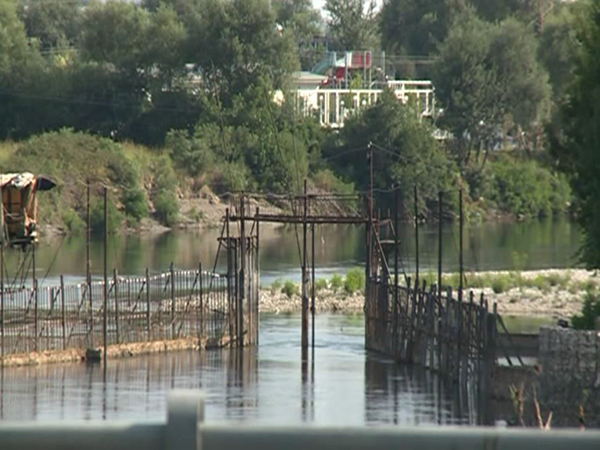
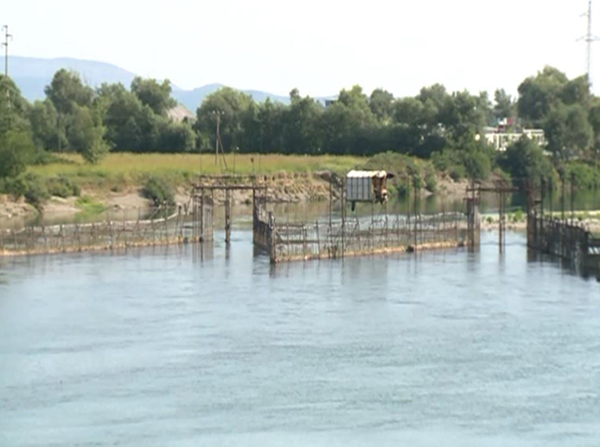
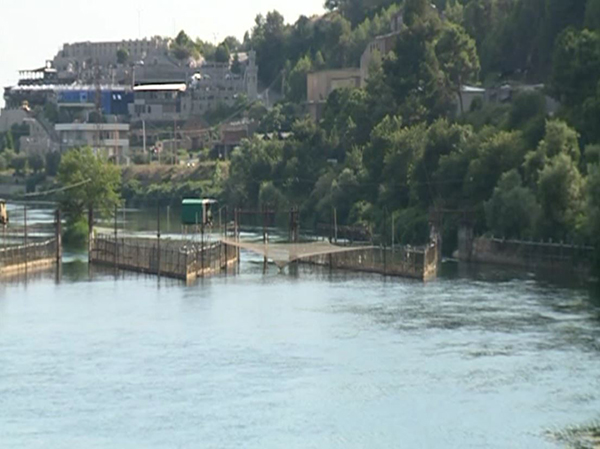
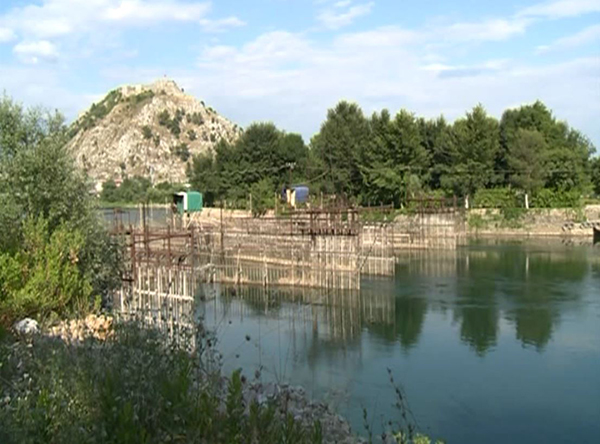

No precise data on decline
Precise catch statistics over the past 40 years are not available.
With the demise of the socially-owned company Industriaimport, which managed fishing on the lake, and the closure of the ‘Ribarstvo’ factory in Rijeka Crnojevica, the only reliable register of fish catches from Lake Skadar were lost.
Records from 1947 to 1976, considered relatively reliable, show a considerable decline every year.
According to one report, if mullet was caught at a rate of 250 tonnes 30 years ago, today the yearly catch is roughly 5-6 tonnes, with the decline attributed to a range of factors.
“I remember when I started out, I caught ten times more than I catch now,” said Nikola Vujanovic, a fisherman from Rijeka Crnojevica, a village on the shores of Lake Skadar.
The daljani “stop everything that moves from either side of the river,” he said.
Only the joint efforts of the Montenegrin and Albanian governments can address the issue.
“It is true that this problem has been around for a long time and that we are trying to solve it,” said Slavica Pavlovic, head of the Fishing Directorate at the Montenegrin Ministry of Agriculture.
In July 2018, the two countries agreed to enhance the work of a joint Water Management Commission on Lake Skadar and the Bojana, the Drim and the Moraca rivers.
Podgorica also plans to commission a study of the effects of the dams on the River Bojana on fish populations as part of a conservation project being implemented by the German development agency GIZ.
“It is evident that there is a decline in the leaping mullet and twait shad populations,” Pavlovic told CIN-CG/BIRN. “We need to obtain precise data in order to prepare a plan of lake management.”
“Though freshwater fishing remains a national level issue, if the issue is a cross-border one, it still has to be regulated by certain agreements and clear rules so that no country suffers due to the negative decisions of the other.”
‘We do not allow it to migrate and leave’
Included in 2010 on a ‘red list’ of threatened species compiled by the International Union for Conservation of Nature, the eel is of particular concern. Fishing data show it is at a historic low and the European Union has recommended constant monitoring.
Mrdak, the Montenegrin ichthyologist, said it was vital to have a joint effort to protect the eel.
“When it comes in February, March and April as spawn, it can enter Bojana and our system is filled, but the problem is that the ell is not allowed to go back to the sea” he said. “We prevent 40 percent of ells to return and spawn.”
“There is more of ell along Europe’s coastline while the Atlantic coast abounds with it. This little bit that we are preventing is just a ‘drop in the ocean’,” Mrdak told CIN-CG/BIRN. “But it is not right to reap the benefits of the good conduct on the Atlantic coast, and for us not to bother.”
But in Albania, Kristo, the deputy agriculture minister, said falling eel populations was hardly unique to Lake Skadar.
“The eel is endangered worldwide; the reason is hard to find,” he said.
Kristo argued that it was in no one’s interest to illegally catch eels given that the Montenegrin and Albanian markets are small and the catch cannot be exported to the EU since the bloc bans the purchase of eels outside its borders.
“The fact is that the drop in eel numbers is not only the case here,” he said. Montenegro, on the other hand, allows trawling for eel, which Albania has banned, Kristo added.
Albanian ecologist Dajana Beko said that eels were endangered by pollution, poaching and climate change. Asked about the daljani, she replied:
“Dam management, legal or not, greatly affects the number and type of fish. If it is managed well it affects the fish, if not, it endangers fish and life in Lake Skadar.”
A MONEY-SPINNER FOR CENTURIES
Journalist and publicist Mustafa Canka says the daljani on the River Bojana have long been coveted as a lucrative source of revenue.
“If you are aware that this is an area where you can continuously fish, that there is constant migration of fish, then you know the value of this,” he said.
“You can see in the cadastral register of Skadar dating back to 1416 that there is a record of daljani. The hunting spots are recorded in the cadastral register of Skadar County. It is written in there precisely who this belongs to. You can lease it and there was an annual fee for it, and how much the state earns.”
“There was talk that it was profitable for the Venetians, and when the Ottomans took Skadar, there was talk that they were a source of considerable profit. All this went into the state treasury, under the sultan. The entire area was always interesting and a great resource to exploit”.
Canka said that under the Principality of Montenegro (1852-1910), there was an agreement with Skadar County about lifting the barricades for three days a year, when eel and thinlip mullet were migrating, in order to give Ulcinj’s fishermen a chance for a decent catch.
Irena RASOVIC


